Last-Minute NYC Holiday Gift Guide 🎁
We’ve created a holiday gift guide with presents for the intrepid New Yorker that should arrive just in time—



Photo courtesy Prospect Park Alliance
Prospect Park turns 150 this year, and the Brooklyn Historical Society and Prospect Park Alliance are ready to celebrate. Yesterday, they unveiled a new exhibition to the public called The Means of a Ready Escape: Brooklyn’s Prospect Park, to honor the 150th anniversary of Prospect Park. The exhibit, which will be on view for one year at the Brooklyn Historical Society, is sure to invoke nostalgia and reflection, particularly in Brooklynites. Using panels and over 150 documents and artifacts, including photos, posters, and scrapbooks, The Means of a Ready Escape will bring Prospect Park’s rich social history to life, while encouraging visitors to reflect on implications for the park today.
Since its beginnings, “Brooklyn’s Backyard” has become one of New York City’s most popular parks, perhaps rivaling Central Park at times. Naturally, it has quite a tale to tell, which you can now delve into at the Brooklyn Historical Society. During its 150 years, Prospect Park has transformed from a barren land mass filled with trees and swamps into the thriving, 585-acres of gorgeousness it is today. It was the renowned landscapers Frederick Law Olmsted and Calvert Vaux, also the designers of Central Park, who made this change happen. Naturally, the exhibit will showcase Olmsted and Vaux’s original plan for the park.
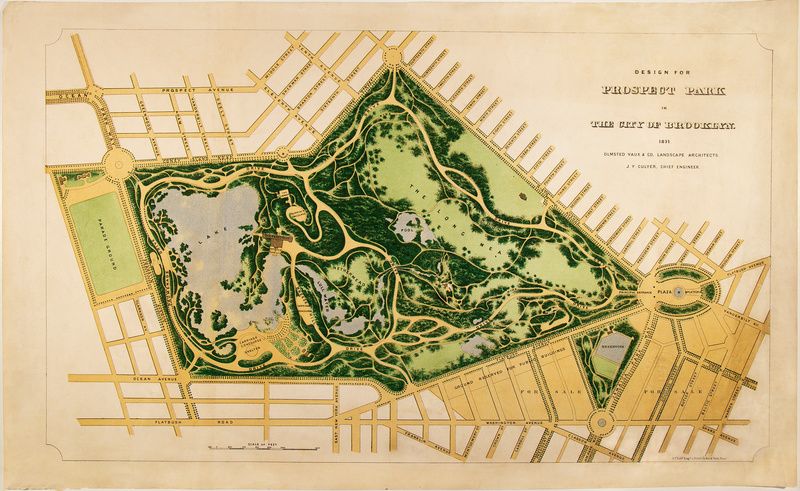
Olmsted and Vaux’s original design. Image courtesy Prospect Park Alliance
As visitors will learn, Prospect Park is and always has been more than a park, but also a unique social space that has grown with Brooklyn itself. During its earlier days, it was home to everything from swan boats to carriage rides and lawn tennis. Before the 1930s, you’d see sheep leisurely walking around the Long Meadow, and decades later, you’d find a rundown recycling center in place of the exquisite boathouse nestled in Prospect Park today. You can view snapshots of this history at the The Means of a Ready Escape, along with objects like 1920s tape measures and paper weights showcasing scenes from Prospect Park.
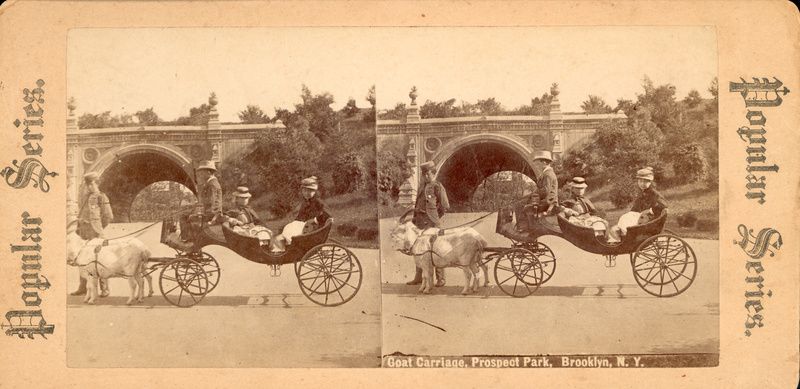
Image courtesy Prospect Park Alliance
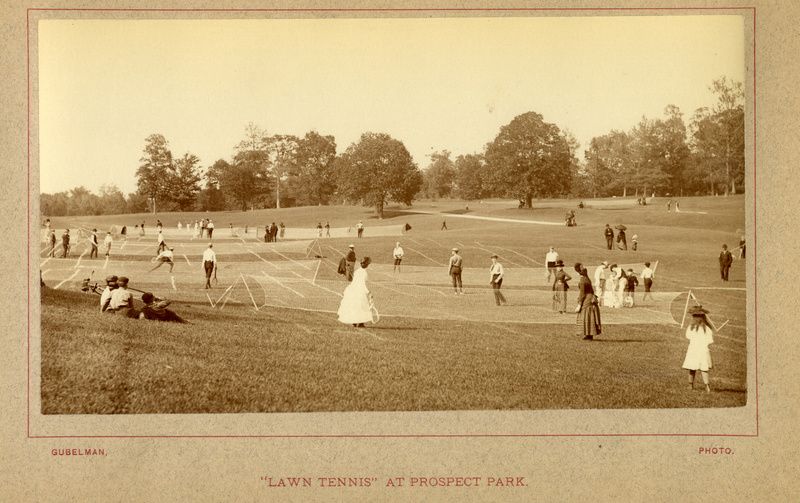
Image courtesy Prospect Park Alliance
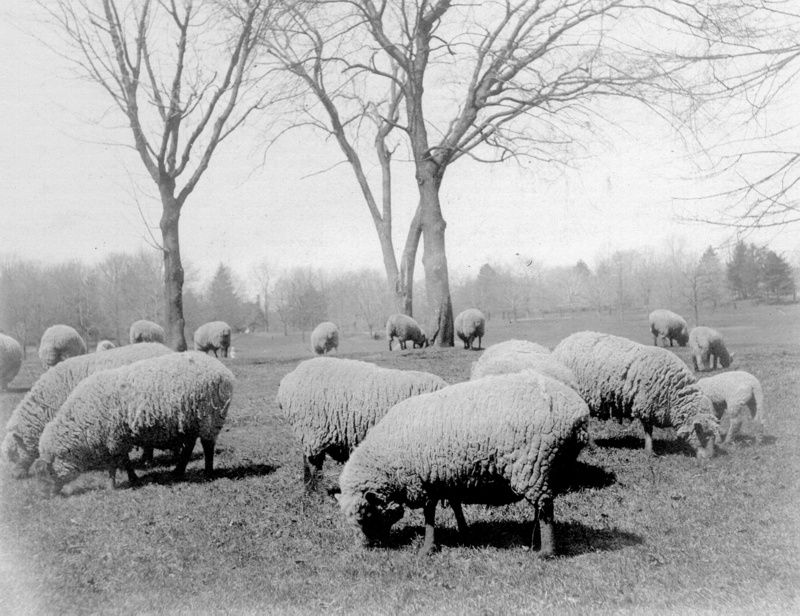
Image courtesy Prospect Park Alliance
For 150 years, many individuals, both the famous and the everyday New Yorker, contributed to Prospect Park’s drastic transformation. For instance, when Robert Moses tried to modernize the park, he paved over grass to create parking lots. Later on, during the 1970s fiscal crisis, Prospect Park fell into disrepair. But this changed in the ’80s, thanks to some determined people who created the Prospect Park Alliance, which played a key role in sustaining and improving the park. Accordingly, the exhibit will include 1990s renderings of Prospect Park’s woodland restorations. The exhibit will also explore other more recent developments in the park, including the establishment of the Drummers Grove and rules surrounding barbecuing and vehicle access.
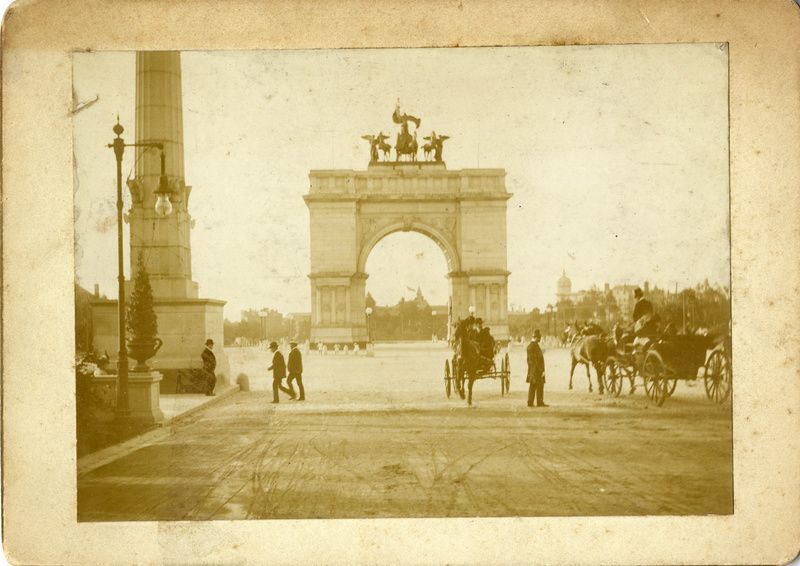
Grand Army Plaza, initially known as “Prospect Park Plaza.” Image courtesy Prospect Park Alliance
Fast forward to today, and Prospect Park is home to very different forms of daily recreation compared to 150 years ago. It’s now a go-to for runners, bikers, birdwatchers, and everyone in between from all backgrounds and boroughs. While the exhibit will highlight the drastic changes that have taken place up until now, it will also help visitors ponder the many ways that Prospect Park has remained the same. Namely, Prospect Park still lives up to the original vision for it, as a place of “simple, temperate, healthful, rural and domestic forms of recreation” for the“overworked inhabitants” of Brooklyn.
Even more so, by exploring the changes of the past, The Means of a Ready Escape will leave visitors reflecting on Prospect Park’s continuous process of growth and evolution that still occurs today, 150 years after the park came to exist.
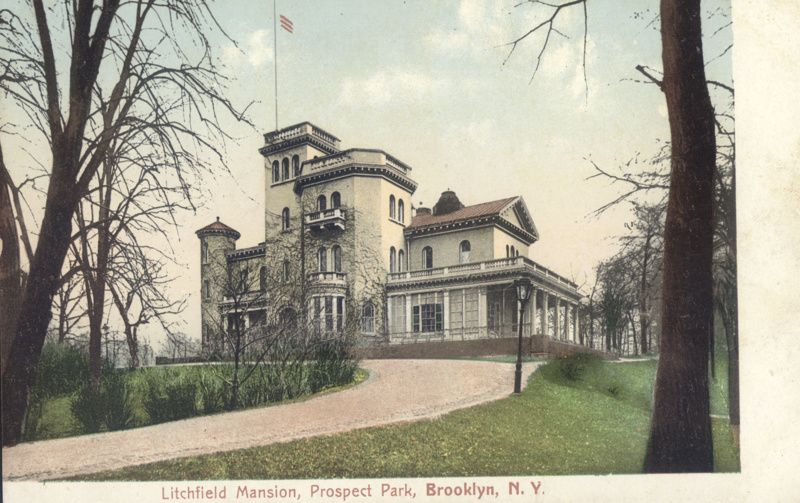
Image courtesy Prospect Park Alliance
The Means of a Ready Escape: Brooklyn’s Prospect Park will be on display during museum hours until July 13, 2018 at the Brooklyn Historical Society, located at 128 Pierrepont St., Brooklyn, NY 11201.
Next, read The Top 12 Secrets of Brooklyn’s Prospect Park and Prospect Park Opens First Composting Bathroom in a NYC Public Park at the Wellhouse Comfort Station.
Subscribe to our newsletter